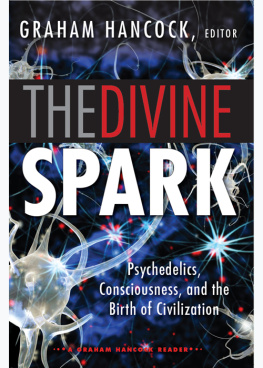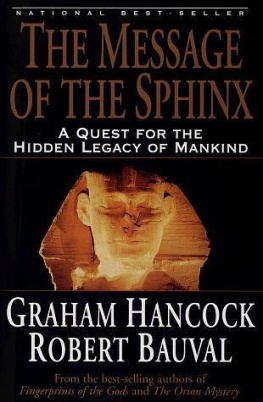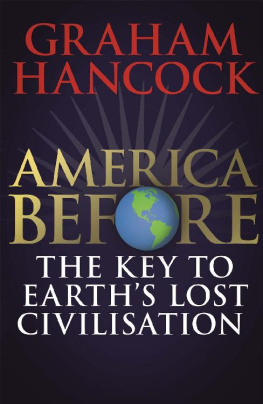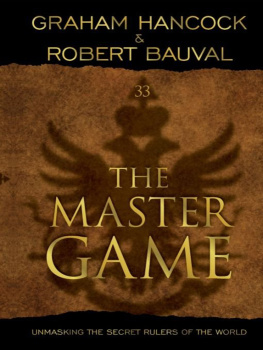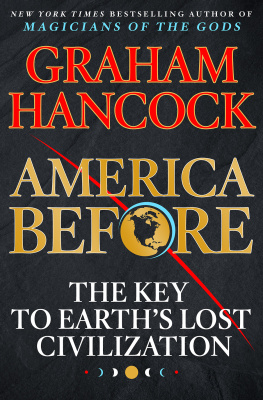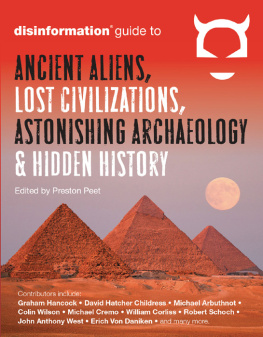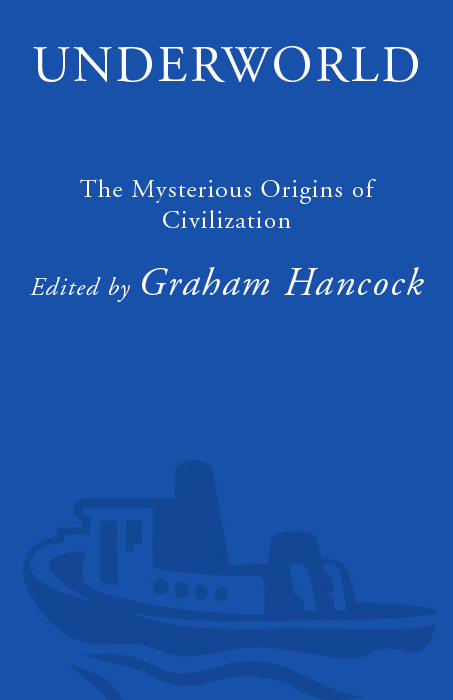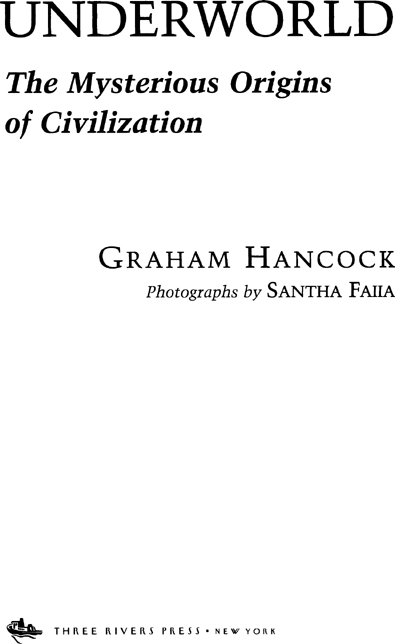Acknowledgements
Underworld has been a huge, all-consuming quest spread out over a period of almost five years. I can only thank here a small number of the very many people who have contributed to it in one way or another.
First and foremost, thanks to my wife Santha, who travelled every step of the journey with me, took all the risks side by side with me, did every dive with me, faced up to every challenge with me and lived and breathed Underworld for five years just as I have done. Of course, all the photos in the book are Santhas but there has only been space here to reproduce a tiny fraction of them. Many more of her wonderful pictures from our adventures appear on the section of my website http://www.grahamhancock.com that is dedicated to Underworld.
Special thanks to Sharif Sakr, my brilliant researcher, who joined me straight out of Oxford University in the summer of 2000 when the writing phase of the book was just beginning. Sharif is, in every sense, exactly what a great researcher should be an original thinker and an individualistic self-starter with huge intelligence, boundless energy and limitless initiative who never needs to be told what to do but who always just gets on and does it. Sharifs contribution to the strengths of Underworld has been enormous.
Thanks also to John Grigsby, my researcher for some years before Sharif joined me, and to Shanti Faiia for her excellent work on researching, planning and coordinating many of the diagrams in the book. Thanks to Sean Hancock for researching Ice Age chronologies and chasing rumours of underwater ruins for us at Pohnpei and Kosrae. Thanks to Leila Hancock for her research on the nature and attributes of Siva. Thanks to Shakira Bagwandeen for research notes on various issues of Indian religion and prehistory.
Dr Glenn Milne of Durham Universitys Department of Geology played a crucial role in generously providing all the inundation maps used in Underworld. Glenns kindness in supplying these maps should not be taken as any sort of endorsement on his part of the broader theories and ideas presented here which are entirely my own responsibility.
Thanks to Ashraf Bechai for showing us the mysterious underwater megalithic sites off Alexandria, particularly the gigantic blocks of Sidi Gaber, which orthodox archaeology has not yet come to terms with.
In what I have to say about Malta I drew heavily on the remarkable research of Dr Anton Mifsud and want to express my thanks to him for allowing me to report his findings so extensively here. If, as I believe to be the case, an entirely new chapter in the prehistory of Malta is about to open, then it is due to Antons tireless search for the truth and the far-reaching investigation that he continues to conduct into the Maltese past. Thanks also to Antons co-authors on his various books Charles Savona Ventura, Simon Mifsud and Chris Agius Sultana.
In India I owe a debt of gratitude to all at the Archaeological Division of the National Institute of Oceanography (NIO), in particular to Kamlesh Vora, Sundaresh and Dr A. S. Gaur. Special thanks, too, to Dr Ehrlich Desa, head of the NIO, who did so much to clear the way for our dives at Dwarka and Poompuhur and showed such good will and kindness towards us when Santha and I first turned up at the NIOs headquarters in Donna Paula, Goa.
Thanks also to Indias National Institute of Ocean Technology (NIOT), whose ground-breaking discoveries in the Gulf of Cambay are reported for the first time in this book. I mention in particular Dr S. Kathiroli, Project Director of the NIOT, Dr S. Badrinaryan, Geological Consultant to the NIOT, and G. Janaki Raman, Manager, Vessel Management Cell.
So many good people have helped us in Japan over the years that it is simply impossible to mention all of them here. I hope those whose names are left out will forgive me. Special mention must be made of our friend Shun Daichi, the Japanese translator of my books who accompanied me and Santha on our journeys in Japan both above and below the water. Thanks too to Seamens Club, Ishigaki, and to the staff and management there whose help made all our diving adventures in Japan possible. Outside Seamens Club, Kiyoshi Nagaki, Isamu Tsukahara, Kihachiro Aratake, Yohachiro Yoshimaru, Mitsutoshi Taniguchi and Kuzanori Kawai all also dived with us and helped us in our underwater investigations.
Last but not least, Santha and I want to thank our children Ravi Faiia, Shanti Faiia, Sean Hancock, Leila Hancock, Luke Hancock and Gabrielle Hancock for putting up with our preoccupations and prolonged absences from home. All the children have played their own parts in the quest, have learned to dive and have joined us for some of our diving adventures. Were proud and happy to have such a bright and enterprising group of young people around us.
Graham Hancock,
London, January 2002
PART ONE
Initiation
1 / Relics
If you do not expect it, you will not find the unexpected, for it is hard to find and difficult.
Heraclitus
Five kilometres off the south-east coast of India, submerged at a depth of 23 metres beneath the murky, shark-infested waters of the Bay of Bengal, an ancient man-made structure sits on the bottom of the sea. The structure is U-shaped, like a huge horseshoe; its periphery measures 85 metres and its walls are about 1 metre thick and 2 metres high.
The discovery was made by a team of marine archaeologists from Indias National Institute of Oceanography (NIO) in March 1991, working off-shore of the Tranquebar-Poompuhur coast of Tamil Nadu near Nagapattinam. Their equipment included side-scan sonar, which transmits an acoustic signal up to 1000 metres wide and measures the strength of the returning echo. Towed behind a research vessel, side-scan sonar is capable of building accurate maps of sea-bed contours and of identifying any obvious anomalies such as shipwrecks.
On 7 March 1991 a shipwreck at a depth of 19 metres was pinpointed by the sonar. It was investigated by divers on 8 and 9 March, who found many scattered objects including lead ingots and iron cannon on the surrounding sea-bed. The official report of the project then states:
Till 1.00 p.m. [on 9 March] the divers were working on the scattered objects. T. C. S. Rao who was carrying out sonar survey 5 km opposite Chinnavanagiri [not far from the wreck] reported another object 40 10 metres having the shape of a ship [?] recorded on sonograph. Shri Bandodkar was sent to the site (designated PMR2) and he placed two marker buoys there. By 2.00 p.m. Manavi and Chinni dived but as the buoys had drifted the object could not be explored.


